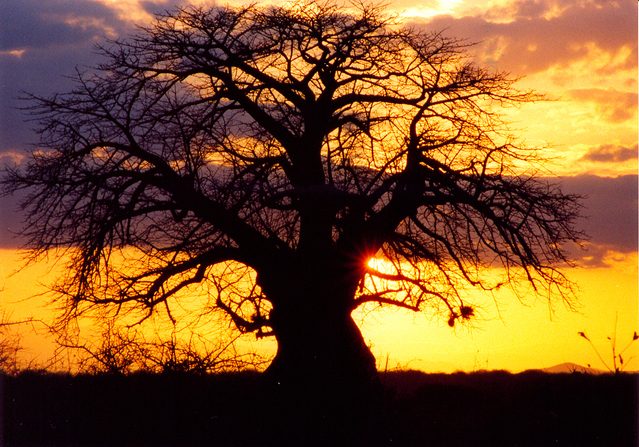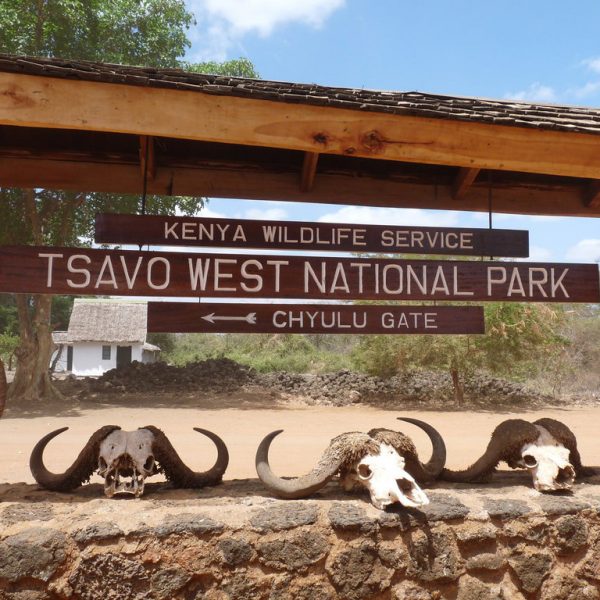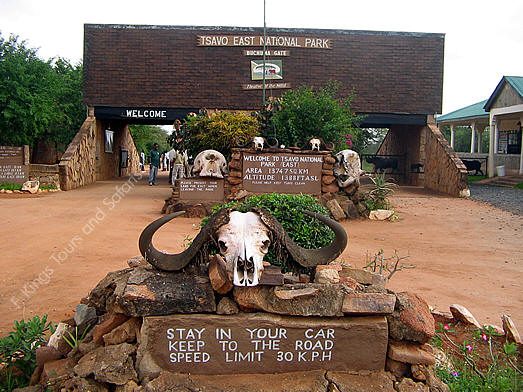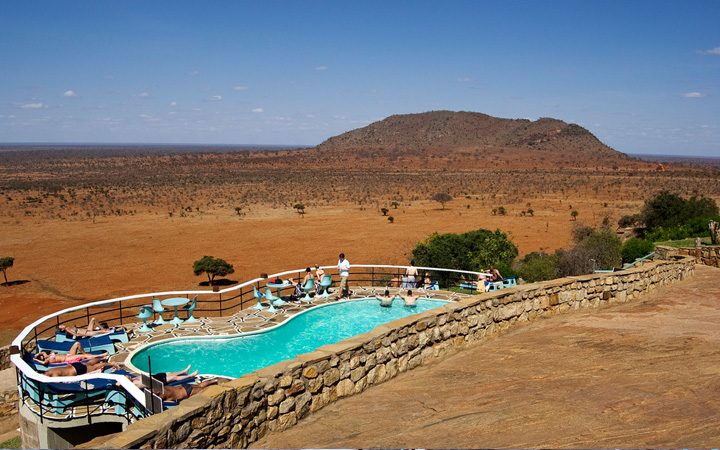A Game Drive Through Tsavo National Park
The colonial government of Kenya gazetted Tsavo’s boundaries as a wildlife refuge in the year 1949. Park gazettement took a long time because the authorities had to take into account the claims from all the tribes. These were the Maasai, the Orma, the Wakamba, the Taita, the Duruma, and the Giriama. Eventually, what was put aside for wildlife was the only sizeable chunk of land to accommodate the population of elephant and rhino, as well as Kenya’s indigenous and endangered species. It gave birth to the famous Tsavo National Park, the largest national park and the oldest protected area in Kenya, which was not the best wildlife area in the country but the only substantial piece that was uninhabited by humans and home to a considerable elephant and rhino population.
Untouched inhospitable land
A trypanosomiasis-carrying fly infested the place which precluded livestock practices and agriculture. In the old days, people used to call Tsavo the Taru desert. It was not only an inhospitable and arid scrubland but also intensely hot. The Galena, the Tsavo, and the Tiva rivers its water into Tsavo National Park. It comprises of dry plains covered by acacia trees, baobab trees, and dormant vegetation. Located in the Coast Province of Kenya in the Taita-Taveta District near the Town of Voi, Tsavo lies between Nairobi City and Mombasa. It has two separate parks, Tsavo West National Park and Tsavo East National Park. They split it into two because of the railway going from Mombasa to Nairobi. Today, not only the rail line but also the Nairobi-Mombasa highway separates Tsavo West and Tsavo East.
Tsavo West National Park
The first Headquarters of Tsavo West National Park was within easy reach of Mtito Andei railhead. It was on the slopes of Kamboyo that commanded breath-taking views of the stunning landscape. The Chyulu range of hills on the northern part of the 3,000 square miles Tsavo West National Park is in a new forest. Just the magnificent scenery warranted its National Park status. Tsavo West is mountainous, scenically stunning, and dotted with water holes. It overlooks lava flows, volcanic cones, and Mzima Springs’ crystal-clear waters bubbling from the lava in the arid land. It harbors a range of mainly bull elephants, about which people knew little in the earlier days. Tsavo West National Park is swampy and wetter than its eastern counterpart. It is known for black rhino, Cape buffalo, leopard, elephant, hippo and Maasai lion as well as bird life. There are also smaller animals that can be spotted, such as hartebeest, the bush baby, Maasai giraffe and lesser kudu.
Tsavo East National Park
Kenya lies across the equator, and Tsavo East National Park is a few degrees latitude south. Located Southeast of Nairobi and northwest of Mombasa, Tsavo East National Park is relatively flat. It encompasses miles of dense scrubland undergrowth that had just an old hunting track that ended about 20 miles from Voi at a place called Heartbreak Camp. Tsavo East National Park is slightly larger than its western counterpart but has dry plains across which the River Galana flows. Apart from River Galana, the key attractions include the Yatta plateau as well as several dams and pools used as watering holes by both animals and birds. The park’s relative closeness to the tourist attractions and beaches around Mombasa and Malindi make it an ideal wildlife safari destination for those who are looking for a one-day picnic. Moreover, Tsavo East National Park is teeming with various Kenyan animals like large families of giraffes, hartebeests, gazelles, zebras, and the Big Five – buffalo, African elephant, rhino, lion, and leopard. Not all of Tsavo East National Park is open to the public. Some areas are remote animal wilderness areas. But there is still an area for visitors to tour around and enjoy Kenyan wildlife.
Threats and conservation
In both the West and the East Tsavo National Parks, poaching, particularly of elephants and rhinos, as well as bushfires remain the primary threats. Illegal poaching for ivory exacted a heavy toll on the elephants. Today some 11,000 of them remain within Tsavo which used to be 45,000 in numbers. Rhinos now exist only in safely fenced sanctuaries. Their horns are of the same material as the fingernails, but in the Far East, it is believed to have healing properties. Hence, as long as the horn and ivory demand persists in the Far East, rhinos and elephants will continue to be annihilated.
Safari in Tsavo
The weather in Kenya is relatively constant year-round. Rainfall varies. The temperature ranges from 28-30°C during the day and 22-25°C at night. It rains heavily from March to May, making this not an ideal time for safaris. The short rainy season in Kenya lasts from October to December. But it is still good to do safaris during this period. The humidity is high from January through April. The best time of the day to go on a game drive for wildlife viewing is either early in the morning or late in the afternoon. In the hot midday sun, the animals tend to sleep. Nevertheless, the guides are always on the lookout. If they spot and find anything unusual, such as a herd of lions, in between the day, they communicate with one another by radio so that the others can drive the tourists to that particular spot.
Most visited park
Little did the colonial government know when they were splitting and developing Tsavo National Park that it would turn out into one of the most visited wildlife spots in the world. Both the West and East parks have their unique charm. Tsavo West National Park is a stunning scenic beauty. And Tsavo East National Park is slightly larger and closer for a day visit. Hopefully, with the conservation measures put in place by the wildlife authorities and the efforts of other stakeholders and well-wishers concerned, the population numbers of elephant and rhino may be restored to the former times.
5 Frequently Asked Questions About Tsavo
To book a safari in Tsavo, please fill out the following form or simply email us on safaris@safari-center.com








